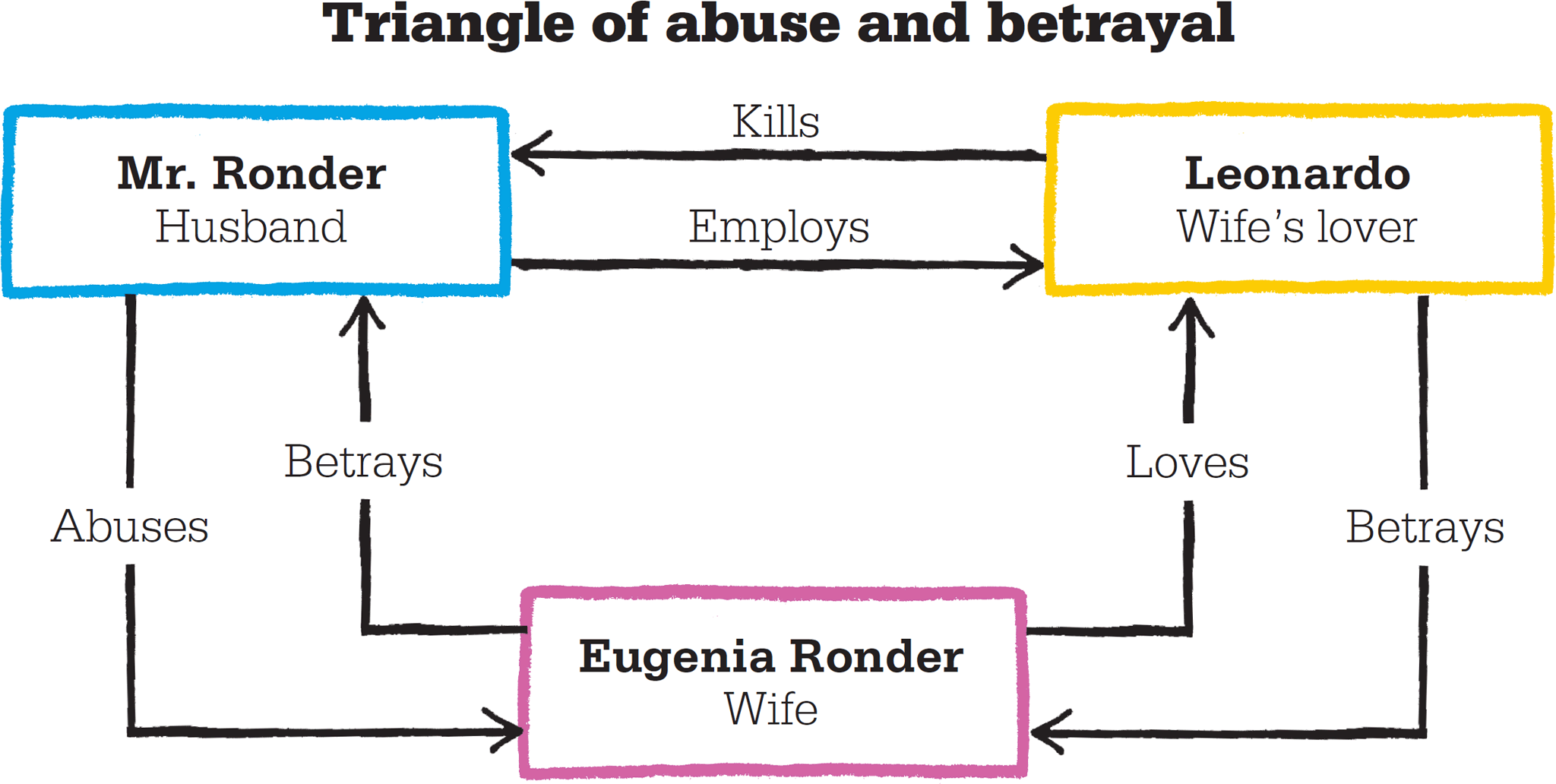
IN CONTEXT
Short story
US: January 1927
UK: February 1927
The Case Book of Sherlock Holmes, 1927
Eugenia Ronder Former circus performer.
Mr. Ronder Eugenia’s late husband, a circus showman.
Leonardo Circus strong man and Eugenia’s late lover.
Mrs. Merrilow Eugenia’s landlady, who approaches Holmes on her behalf.
Unusually for a Holmes story, this tragic tale of love and revenge hinges almost entirely on a confession rather than any detection. Holmes is not the analytical and deductive genius in this case, but a priestlike listener, whose role is simply to provide compassion and absolution to a spiritually tormented woman.

A woman with a past
In late 1896, Holmes is approached by a landlady, Mrs. Merrilow, who is worried about one of her tenants—a peculiarly reclusive woman named Eugenia Ronder, who wears a permanent veil to hide her facial deformities. She seems to be “wasting away” and has been crying out “Murder!” in her sleep. The landlady has suggested that if Eugenia has any secrets to divulge, she should see a member of the clergy, the police, or Sherlock Holmes—and Eugenia chooses to meet with the latter.
Holmes tells Watson he remembers reading about the case of Eugenia. She had worked for the circus, and married the lion tamer and proprietor of a traveling “wild beast” show. One night, seven years previously, the lion had escaped and attacked Eugenia, mutilating her face and mauling her husband to death, crushing his head with its claws. However, the police investigation left many questions unanswered, and Holmes says that he found the eventual verdict of “death from misadventure” unsatisfactory.

A fearless lion-tamer performing at L’Hippodrome in Paris in 1891. Theatrical and daring performances involving wild animals were typically among the most popular circus acts.
The secret unveiled
Holmes and Watson arrive at Eugenia’s lodgings, where she reveals her long-held secret. Her husband had been a violent drunk who inflicted physical and emotional humiliation on her, and was cruel toward both human and animal members of his troupe.
Leonardo, the show’s strong man, was Ronder’s polar opposite—attractive and confident. Eugenia fell in love with Leonardo, and soon they were plotting to rid themselves of her keeper. The smitten strong man created an ingenious weapon, a cudgel with five nails spaced to resemble a lion’s claw. One night, as Ronder went out to feed the lion, Leonardo felled his rival with a lacerating blow to the head.
In accordance with their plan, Eugenia freed the lion from its cage, hoping it would be blamed for her husband’s death. But the beast leapt at her, sinking its teeth into her face, and Leonardo ran away in terror. After Eugenia was rescued, she kept quiet about Leonardo’s role in Ronder’s death; despite his desertion, she still loved him.
"No words can describe the framework of a face when the face itself is gone."
Dr. Watson
A life saved
Eugenia had lost her beauty, her lover, and her livelihood, and chose to disappear into obscurity. Recently, however, having learned of Leonardo’s death, she had felt an urge to confess. Her testimony elicits great sympathy from Holmes. Astutely sensing that Eugenia is contemplating suicide, which was illegal at the time, he admonishes her: “Your life is not your own…Keep your hands off it.” Two days later, Eugenia sends Holmes a bottle containing a deadly poison; the accompanying note indicates that she has chosen to live.
The story describes both a literal act of unveiling—Eugenia revealing her face to Holmes—and a symbolic one: lies being cast aside to reveal the truth. Ronder trapped his wife in a cage of his own devising, for his own pleasure; and when the lion destroyed her life, Eugenia crawled like a wounded animal into her own cage—the sequestered lodging house. In freeing the lion, Eugenia also liberated her murderous hatred of her husband, but with terrible, lifelong consequences.
At its heart, this story is about Eugenia’s entrapment in an abusive marriage. The plight of women who were utterly powerless to change their fates was a theme common to many Holmes stories, including “The Adventure of the Abbey Grange”.
THE TRAVELING CIRCUS
The first circus in England was started in 1768 by an ex-cavalry officer named Philip Astley, and was entirely focused on displays of horsemanship. Increasingly, bands of roving performers roamed from town to town. Gradually, tightrope walking, acrobatics, and clowning were introduced, and many circuses advertised their arrival with an impressive parade.
By the late 19th century, the circus had become a truly great and magnificent spectacle. The American Barnum and Bailey Circus, which toured Europe from 1897 to 1902, thrilled its audiences with trick riding, juggling, and trapeze acts, as well as human freak shows. Another highlight was the performing elephants, lions, and other exotic creatures (by then there was an international trade in wild animals tamed for circuses). Animals toured with British circuses until fairly recently, but today a legal ban on their use is impending.
